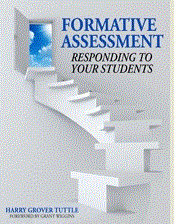As schools move toward mobile learning, they have to make decision about the type of mobile device that the students will use. Regardless of whether the school supplies its own device or whether students supply their own, there are some basic minimal requirements.
1) The device has to connect to the internet so students can use qr codes, do internet searching, bookmark commonly used sites, watch educational videos and create online surveys.
2) The device should have enough memory for basic apps such as an e-reader, a note-taker/ word processor, spreadsheet, media player, and a dictionary app. The device will have other apps that help the students to climb the learning ladder from memorization to synthesis/evaluation for their specific learning goals. There will be many more higher level learning apps (70%) than lower level ones (30%). Those apps that simulate or duplicate real-world use of the subject area learning will be the most useful apps.
3) The device should have a camera and microphone so students can take pictures, record videos, and record audio. They will want to capture and demonstrate their learning through images and sound (pictures, sound recordings, and movies).
4) Students need to be able to do texting on the device so they can seek the perspectives of others and to learn from others outside the classroom. As students learn to ask good essential questions, they can seek the perspectives of others so they can go beyond the limited perspective of the textbook. If we value diversity, let’s bring it into the classroom through seeing the opinions of others.
5) As students use their mobile device to explore concepts through productivity based learning, they will want to be able to call their experts such as their aunt or grandfather for things such as what is was like during the Depression, how a farm business has been changed by technology, etc. so the mobile learning device needs to have phone capabilities. Even better, if it can have videoconferencing.
6) Students need access to their social media sites on their mobile learning device so that they can distribute surveys. When they want to receive many responses, they know they can distribute the surveys to their online friends. The more people responding, the better the data to analyze and the more critical thinking involved.
If we want students to be prepared for their future in the real world, the world outside the classroom, then we need to start taking them virtually into that world and allowing them to bring that world into the classroom through their mobile learning device.
I have 20+ Spanish spontaneous speaking/fluency activities available at Teacherspayteachers:
http://bit.ly/tpthtuttle
My three formative assessment books: http://is.gd/tbook





